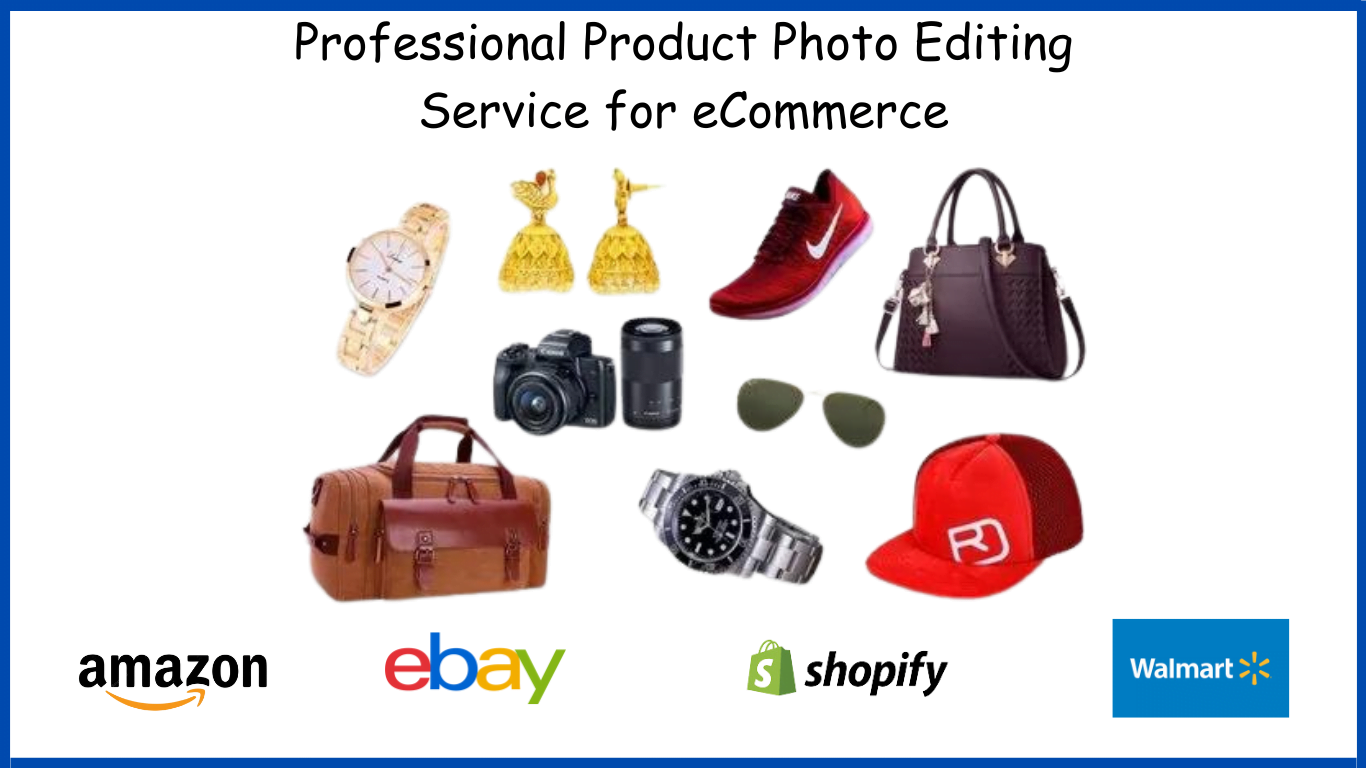Product Photo Editing Service Elevate Your E-Commerce with Perfect Images
First of all, it’s important to make a good first impression in the highly-demanding e-commerce ecosystem. Product images are a big factor in the decision-making process of customers before purchasing items on your online store Good quality product photos can help improve the look of your brand making it seem more trustworthy which gives you back some opportunities in sales. This is when product photo editing services can be a life reader.
What is Product Photo Editing?
Product photo editing involves various techniques to enhance the visual appeal of product images. This can include basic adjustments like brightness and contrast, as well as more complex edits such as background removal, shadow creation, and color correction. The goal is to produce images that are not only visually appealing but also true to the product.
Importance of Product Photo Editing Services
1. Enhanced Visual Appeal: Professionally edited photos look more attractive and can grab the attention of potential customers.
2. Consistency: Uniformity in product photos helps in creating a cohesive look for your online store, which enhances brand recognition.
3. Improved Sales: High-quality images can influence purchasing decisions, leading to higher conversion rates.
4. Customer Trust: Clear and accurate product photos build trust with customers, reducing the likelihood of returns due to misrepresented products.
Jewelry Retouching Service?
Types of Product Photo Editing Services
Background Removal: Removing the background to isolate the product, making it stand out more clearly.
1. Color Correction: Adjusting the colors to ensure they are true to life and consistent across all images.
2. Shadow Creation: Adding natural-looking shadows to give depth and dimension to the product.
3. Image Retouching: Removing imperfections such as dust, scratches, and blemishes to present a flawless product.
4. Resizing and Cropping: Adjusting the image size and framing to fit various platforms and requirements.
5. Ghost Mannequin Effect: Used for apparel photography, where the mannequin is removed to show the shape and fit of the clothing.
Benefits of Outsourcing Product Photo Editing
Outsourcing product photo editing to professional services can provide numerous advantages:
1. Expertise: Professional editors have the skills and experience to deliver high-quality results.
2. Time-Saving: Outsourcing frees up your time to focus on other aspects of your business.
3. Cost-Effective: Investing in professional editing can be more economical than hiring in-house staff and purchasing expensive software.
4. Consistency: Professionals can ensure a consistent look across all your product photos, enhancing your brand image.
Choosing the Right Product Photo Editing Service
When selecting a product photo editing service, consider the following factors:
1. Experience: Look for services with a proven track record in e-commerce photo editing.
2. Portfolio: Review their portfolio to assess the quality of their work.
3. Turnaround Time: Ensure they can meet your deadlines without compromising on quality.
4. Pricing: Compare pricing structures to find a service that fits your budget.
5. Customer Support: Good communication and support are essential for a smooth collaboration.
Popular Product Photo Editing Services
Here’s a comparison table of some popular product photo editing services:
| Service Provider | Key Features | Pricing | Turnaround Time | Customer Rating |
|---|---|---|---|---|
| Pixelz | Background removal, color correction, retouching | Starts at $1 per image | 24 hours | 4.8/5 |
| Path Edits | Clipping path, shadow creation, ghost mannequin | Starts at $0.50 per image | 12-24 hours | 4.7/5 |
| Fiverr | Wide range of freelancers, customizable services | Varies by freelancer | Varies by freelancer | 4.5/5 |
| Upwork | Access to professional editors, flexible terms | Varies by freelancer | Varies by freelancer | 4.6/5 |
| Clipping Path India | Bulk image editing, background removal, retouching | Custom quotes available | 24-48 hours | 4.7/5 |
Steps Involved in Product Photo Editing
1. Image Upload: Provide the raw images that need editing.
2. Specification of Requirements: Clearly outline the specific edits you require.
3. Editing Process: The service provider performs the necessary edits.
4. Review: Review the edited images and request any necessary revisions.
5. Final Delivery: Once satisfied, the final images are delivered.
Detailed Examination of Key Editing Techniques
Background Removal
Background removal is one of the most common and essential aspects of product photo editing. This technique involves isolating the product from its original background to place it on a clean, neutral background, typically white. The benefits include:
- Focus on the Product: By removing distracting backgrounds, the product becomes the focal point.
- Professional Look: Clean backgrounds give images a polished, professional appearance.
- Versatility: Isolated products can be easily placed on any background, useful for various marketing materials.
Tools like Photoshop’s Magic Wand or Pen Tool are often used for precise background removal, ensuring the edges are clean and the product is accurately outlined.
Color Correction
Color correction is critical for ensuring that the product images accurately represent the actual product. This process adjusts the colors in an image to match the true colors of the product, compensating for any lighting discrepancies during the photoshoot. Key aspects include:
- Hue Adjustment: Correcting the overall color tone.
- Brightness and Contrast: Ensuring the image is neither too dark nor too bright.
- Saturation: Enhancing the color intensity without making it look unnatural.
Accurate color representation helps prevent customer dissatisfaction and returns, as buyers receive products that look as expected.
Shadow Creation
Adding shadows to product images gives them a natural, three-dimensional appearance. Shadows can be categorized into:
- Natural Shadows: Mimics the shadow naturally cast by the product.
- Drop Shadows: Adds depth by simulating a shadow on a flat surface.
- Reflection Shadows: Creates a mirror-like reflection beneath the product, often used for a sleek, modern look.
Shadows help ground the product, making it appear more tangible and realistic, which can enhance its appeal.
Image Retouching
Image retouching involves removing any imperfections from the product photos. This includes:
- Dust and Scratches: Removing minor blemishes that distract from the product.
- Enhancing Details: Sharpening important details to make the product more attractive.
- Smoothing Textures: Ensuring the texture of the product is uniform and appealing.
Retouching is crucial for presenting products in the best possible light, making them look pristine and enticing.
Resizing and Cropping
Resizing and cropping ensure that product images fit the required dimensions for different platforms. Key considerations include:
- Aspect Ratio: Maintaining the correct aspect ratio to avoid distortion.
- Resolution: Ensuring high resolution for clear, detailed images.
- Framing: Cropping to highlight the most important parts of the product.
Proper resizing and cropping ensure that images look professional and consistent across all platforms, from websites to social media.
Ghost Mannequin Effect
The ghost mannequin effect is commonly used in apparel photography. This technique involves taking multiple photos of clothing on a mannequin and then digitally removing the mannequin to create an image that shows the garment’s shape and fit without any distractions. Benefits include:
- Showcasing Fit: Clearly displays how the garment fits without the distraction of a mannequin.
- Professional Presentation: Gives a clean, professional look that focuses on the clothing.
- Versatility: Can be used for various types of clothing, from shirts to dresses.
This effect is achieved through careful editing, aligning multiple photos, and blending them seamlessly to create the final image.
Common Challenges and Solutions in Product Photo Editing
1. Maintaining Natural Look: Over-editing can make photos look unrealistic. To avoid this, it’s crucial to balance retouching with natural aesthetics. Professional editors use subtle techniques to enhance without exaggerating.
2. Consistent Lighting: Variations in lighting can affect image consistency. To address this, standardize lighting setups during the photo shoot and make adjustments during editing to ensure a uniform look across all images.
3. Accurate Color Representation: Ensuring colors match the actual product can be challenging. Using color correction tools and color calibration techniques helps achieve true-to-life colors, essential for customer satisfaction.
Case Studies of Successful Product Photo Editing
Case Study 1: Fashion Retailer
A popular online fashion retailer struggled with high return rates due to inaccurate product photos. They invested in professional photo editing services to improve their images. Key changes included:
- Background Removal: Clean, white backgrounds made the clothing stand out.
- Color Correction: Ensured the colors matched the actual products.
- Ghost Mannequin Effect: Showed the fit and shape of the clothing without distractions.
Result: The retailer saw a 30% decrease in return rates and a 20% increase in sales within six months.
Case Study 2: Electronics Store
An electronics store needed to enhance the presentation of their products to compete with larger brands. They outsourced their photo editing to a professional service. Key improvements included:
- Image Retouching: Removed dust and scratches, enhanced product details.
- Shadow Creation: Added natural shadows to give a 3D effect.
- Resizing and Cropping: Optimized images for various online platforms.
Result: The store experienced a 25% increase in website traffic and a 15% boost in online sales.
Future Trends in Product Photo Editing
1. AI and Automation: The use of artificial intelligence in photo editing is on the rise, allowing for faster and more efficient edits without sacrificing quality.
2. 3D Imaging: As technology advances, 3D product images are becoming more popular, providing a more immersive shopping experience.
3. Interactive Images: Interactive and 360-degree product images allow customers to view products from all angles, enhancing their online shopping experience.
Conclusion
Product photo editing is a must for any e-commerce business to outshine their merchandise amidst competition. Having high-quality, professionally edited photos can have a major impact on customer perception and purchases for your products. With the right service and a headful of see-how-it-works knowledge, you’ll be able to set up for success with your product images.
Professional product photo editing is more than only improving a visual appearance of your products; it’s also about how you as a brand can be trusted and appealing to the eyes for potential customers. However, the benefits of having a more visually appealing site that is consistent and professional translate to more sales and winning the trust of your prospective clients. Is it worth it?
As the e-commerce landscape continues to evolve, staying ahead of the competition with top-notch product images will be key to your success. By leveraging the expertise of professional photo editing services, you can present your products in the best possible light and drive your business forward.




